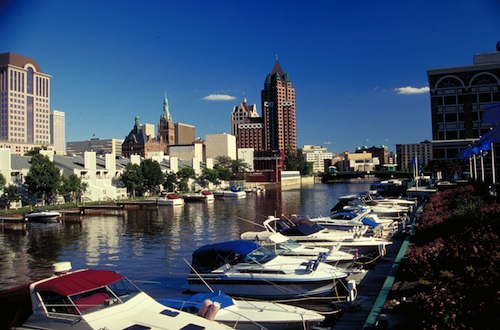Back at the end of 2010, Milwaukee topped a Brookings Institution study on the most racially-segregated metro areas in America. Now, take a look at this map of the 2012 Presidential results from Milwaukee and surrounding counties:
That data originally comes from here, which notes that among top 50 population cities in the United States, Milwaukee has the second-largest voting gap between urban and suburban counties in the 2012 election. For a good understanding of why urban-suburban political divides matter, read this post and also check out this video of counties won in Presidential elections from 1840-now.
Within Milwaukee, the increasing segregations may be underscoring lack of access to resources. 90 percent of the city’s African-American population lives within the city, and suburban whites are notably against public transportation systems that might connect the two areas. If you want a quick explainer on why Milwaukee’s segregation is so much sharper than a place like Chicago or Detroit, here ’tis:
“Most of our history is very similar to Chicago, Cleveland or even Baltimore,” says Marc Levine, professor of history and economic development at the University of Wisconsin, Milwaukee. “Every place has had the zoning ordinances, then restrictive covenants, the practices of realtors. The standard history. What makes Milwaukee a little bit different than these other places, which explains why we’re consistently in the top five and often No. 1, in segregation? We have the lowest rate of African-American suburbanization of any of these larger cities.”
Is it the most racially/politically-segregated place in America? It might be, although that’s obviously tough to say. Regardless, a new focus may be needed in the area. The good news: some millennials are choosing it as an option over Chicago.

